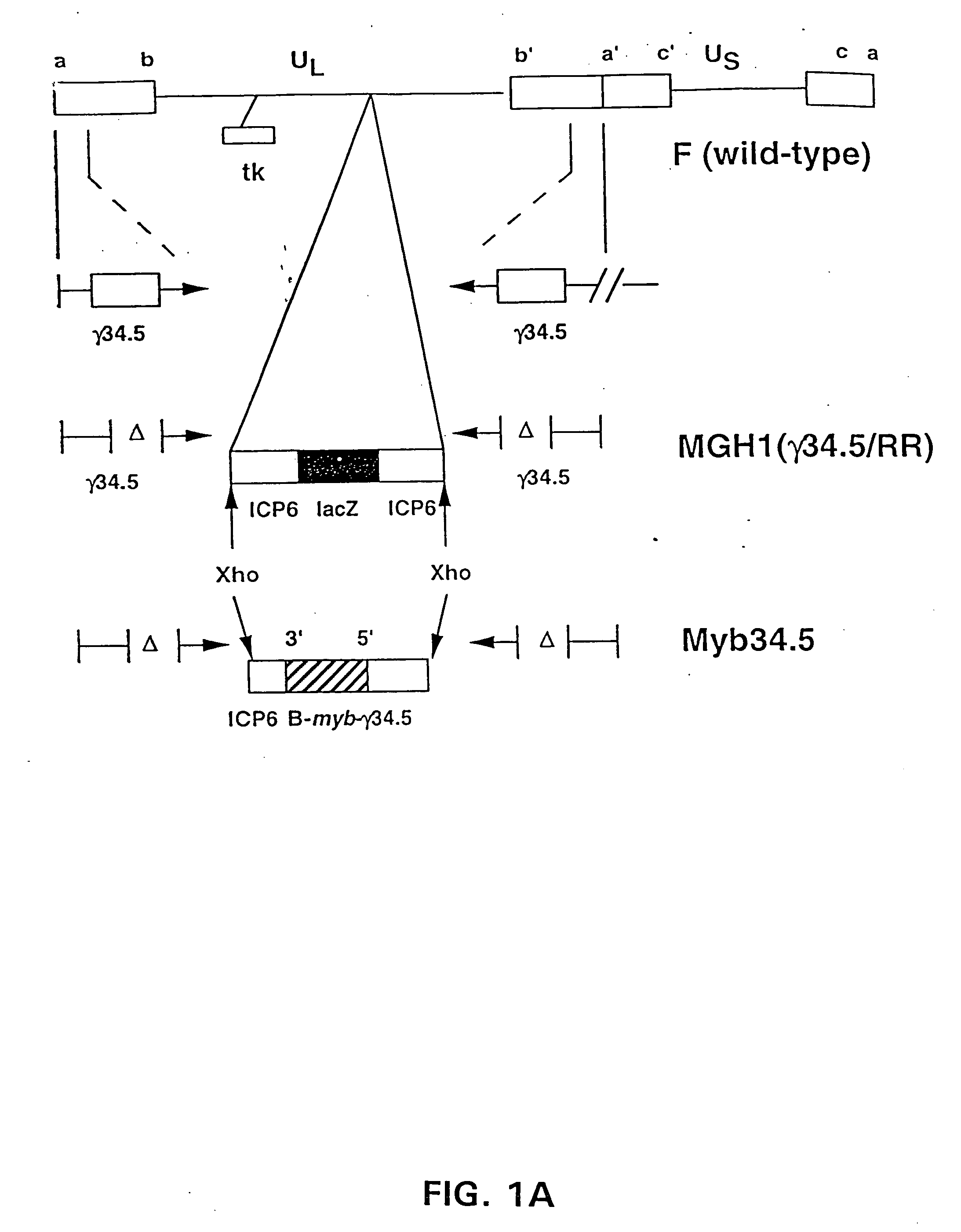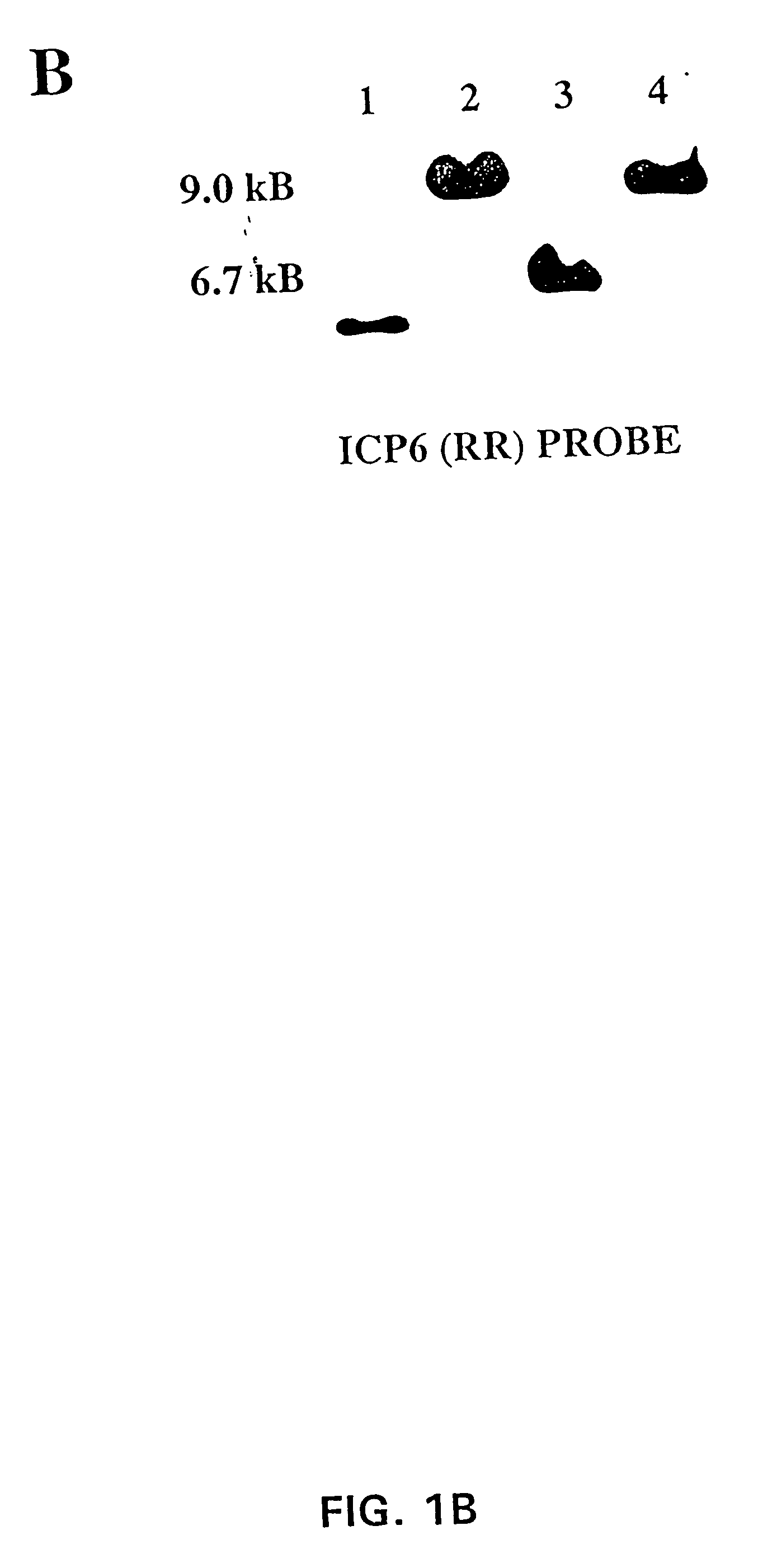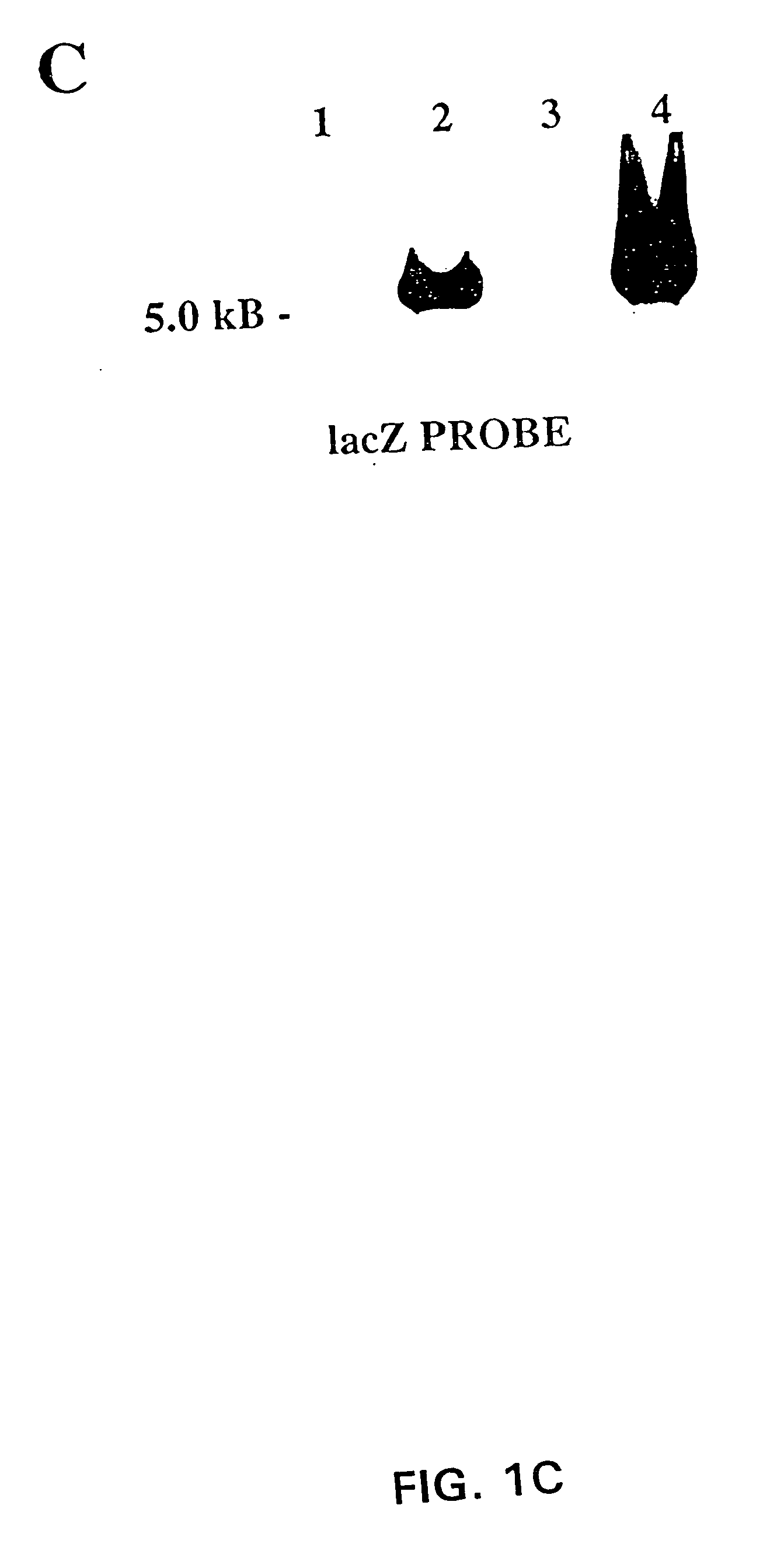Cell-specific and/or tumor-specific promoter retargeting of herpes gamma 34.5 gene expression
a promoter retargeting and herpes virus technology, applied in the field of herpes virus mutants, can solve the problems of individual death, tumor enlargement and vital area occupied space, and inability to control,
- Summary
- Abstract
- Description
- Claims
- Application Information
AI Technical Summary
Benefits of technology
Problems solved by technology
Method used
Image
Examples
example 1
Neural Neoplasms
[0183] Introduction
[0184] Deletion of the γ34.5 gene encoding for virulence markedly reduces cytotoxicity mediated by herpes simplex virus (HSV). To target lytic virulence to tumors, the inventors created a herpes simplex virus (HSV-1) mutant designated Myb34.5. This viral mutant is characterized by deletions in ICP6 (also known as UL39 or ribonucleotide reductase) and of the two endogenous copies of the γ34.5 gene (RL1) and by reintroduction of one copy of γ34.5 under control of the E2F-responsive, cellular B-myb promoter.
[0185] On direct intracerebral inoculation in mice, Myb34.5 remained as avirulent as a γ34.5 mutant virus. However, its oncolytic efficacy against a variety of human glioma cells in culture and in vivo was similar to that of a single ICP6 mutant strain that possesses a wild-type γ34.5 gene. This combination of antitumor efficacy and retained neuroattenuation suggests that cell cycle-regulated promoters can be used to target HSV-1 virulence towar...
example 2
Peripheral Neoplasms
[0220] Introduction
[0221] The vast majority of cancer gene therapy strategies for transgene delivery rely on genetically modified viruses (Rosenberg, S. A., et al., Hum. Gene Ther. 11:919-979 (2000); Roth, J. A. and Cristiano, R. J., J. Natl. Cancer Inst. 89:21-39 (1997)). These viruses have generally been engineered such that they are capable of replication only in special packaging cell lines and incapable of replication in humans. Antineoplastic activity is dependent on transgene delivery and expression. An alternative strategy relies on and exploits viral replication for tumor destruction. Infection of tumor cells by several types of viruses leads to cell destruction and simultaneous release of progeny virion that can infect adjacent tumor cells. The antineoplastic activity of viral oncolysis is dependent on the very efficient process of viral replication; however, it is critically important to maximize the ability of the virus to replicate in neoplastic ce...
PUM
| Property | Measurement | Unit |
|---|---|---|
| pH | aaaaa | aaaaa |
| volumes | aaaaa | aaaaa |
| volumes | aaaaa | aaaaa |
Abstract
Description
Claims
Application Information
 Login to View More
Login to View More - R&D
- Intellectual Property
- Life Sciences
- Materials
- Tech Scout
- Unparalleled Data Quality
- Higher Quality Content
- 60% Fewer Hallucinations
Browse by: Latest US Patents, China's latest patents, Technical Efficacy Thesaurus, Application Domain, Technology Topic, Popular Technical Reports.
© 2025 PatSnap. All rights reserved.Legal|Privacy policy|Modern Slavery Act Transparency Statement|Sitemap|About US| Contact US: help@patsnap.com



